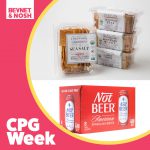Dietary Guidelines Report: Sugar and Caffeine Are Fine, It Just Depends on What You’re Eating (and Drinking)
Caffeine is okay in coffee, but be wary of energy drinks. Sugar is fine in fruits and vegetables, but not added to snacks and drinks. It seems to be these sorts of recommendations made by the 2015 U.S. Dietary Guidelines Advisory Committee (DGAC) that are drawing praise from some and hostility from others.
Last week, the government-backed committee, which is comprised of 14 nationally recognized experts in the fields of nutrition, medicine and public health, submitted their report to the U.S. Department of Health and Human Services (HHS) and U.S. Department of Agriculture (USDA). The DGAC’s recommendations are likely to shape the official 2015 U.S. dietary guidelines, which are intended to promote the health and well-being of Americans.

The committee’s report includes commentary on sustainability and the environmental impact of current diets, the first time that the DGAC, first established in 1980, has waded into the subject. The published report, which is released every five years, has major implications on the foods that consumers eat and on the ingredients that food and beverage companies choose to use and market.
While some, including a few members of the U.S. Congress, have accused the DGAC of overstepping its authority by advocating certain public policy recommendations like a tax on sugar-sweetened beverages, health advocates are praising the committee for giving recommendations based on foods as a whole versus making guidelines for specific nutrients.
Experts from the report state that, “the totality of the diet — the combinations and quantities in which foods and nutrients are consumed — may have synergistic and cumulative effects on health and disease.” It’s the committee’s stance that consumption of sugars in fruits and vegetables, which contain various other nutrients and fibers, can have a different result on the body than consuming added sugars from a beverage or snack.
Here is a summary of the DGAC’s recommendations.
On Cholesterol
- Although the 2010 dietary guidelines recommended that cholesterol intake be limited to no more than 300 mg/day, the 2015 dietary guidelines is not continuing this recommendation. The new dietary guidelines state that cholesterol is no longer a “nutrient of concern for overconsumption.”
- In fact, the committee states that there is no “appreciable relationship” between dietary cholesterol and cholesterol in the blood, which is consistent to reports by the American Heart Association.
On Sugars
- The committee is placing a strong emphasis on “added” sugars suggesting that it is different from those that occur naturally in fruits and vegetables.
- The committee suggested to limit “added” sugar intake to less than 10 percent of total calories consumed.
- Policy recommendations included putting a tax on sugar-sweetened beverages and putting nutritional information on the front of all packaging.
On Low-and No-Calorie Sweeteners
- The committee reviewed evidence on the efficacy of low-calorie sweeteners in weight loss and management and concluded that the ingredients can be helpful for weight loss. However, it did not recommend beverages containing no- or low-calorie sweeteners be used as tools to reduce both sugar and caloric intake.
On Caffeine
- The committee states that consumption of three to five cups of coffee a day can actually be a healthy part of the diet and is associated with reduced risk of type 2 diabetes and heart disease.
- On the other hand, the committee is warning against caffeine from energy drinks, which can provide high caffeine intake, or greater than 400 milligrams per day for adults. It is recommending limited or no consumption of high caffeine drinks for children and adolescents.
On Salt
- The committee showed a softer approach on salt, recommending 2,300 milligrams or less of dietary salt per day, even for those people most at risk for heart disease. This new advice followed a 2013 report by the Institute of Medicine that said there is no solid evidence that eating less than 2,300 milligrams a day of sodium offers benefits, although the report says that limiting salt can still be helpful for some people.
Now that the advisory committee has completed its recommendations, it will be further reviewed by the HHS and USDA and considered along with comments from the public and various experts. The public is encouraged to view the report and provide written comments. You will have until April 8,, 2015. The government’s final, updated guidelines will be made available by the end of the year.













